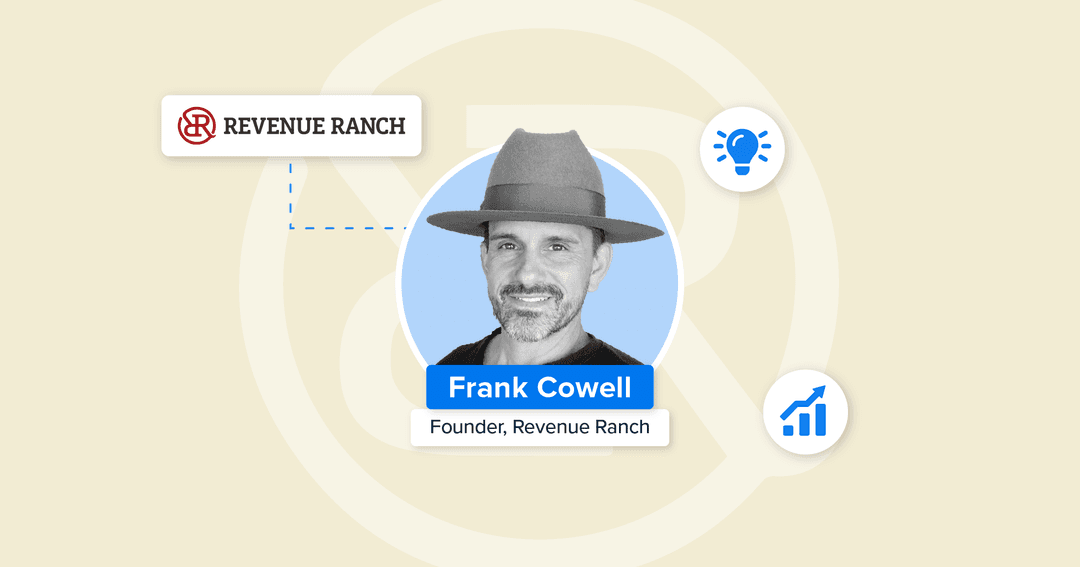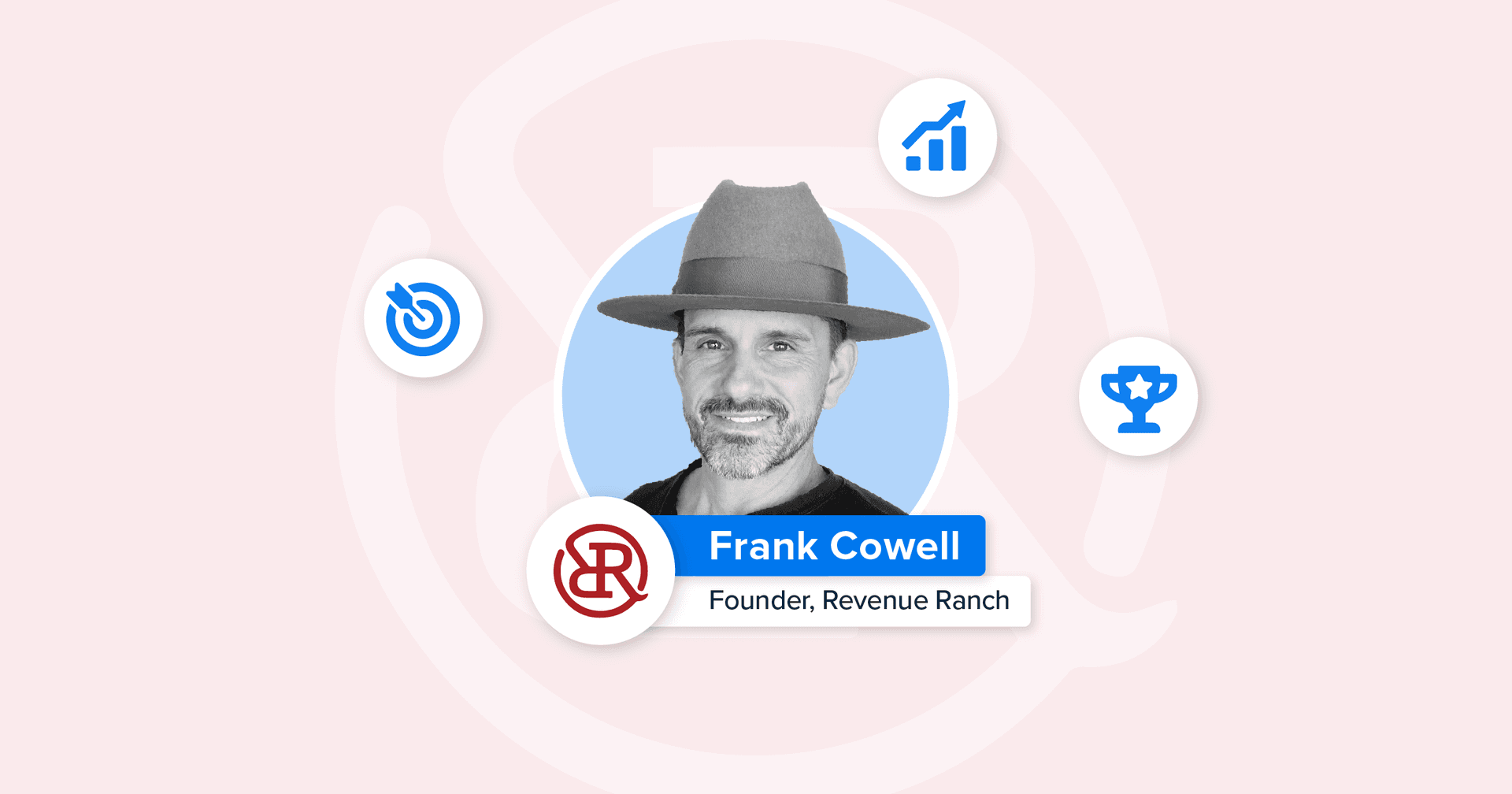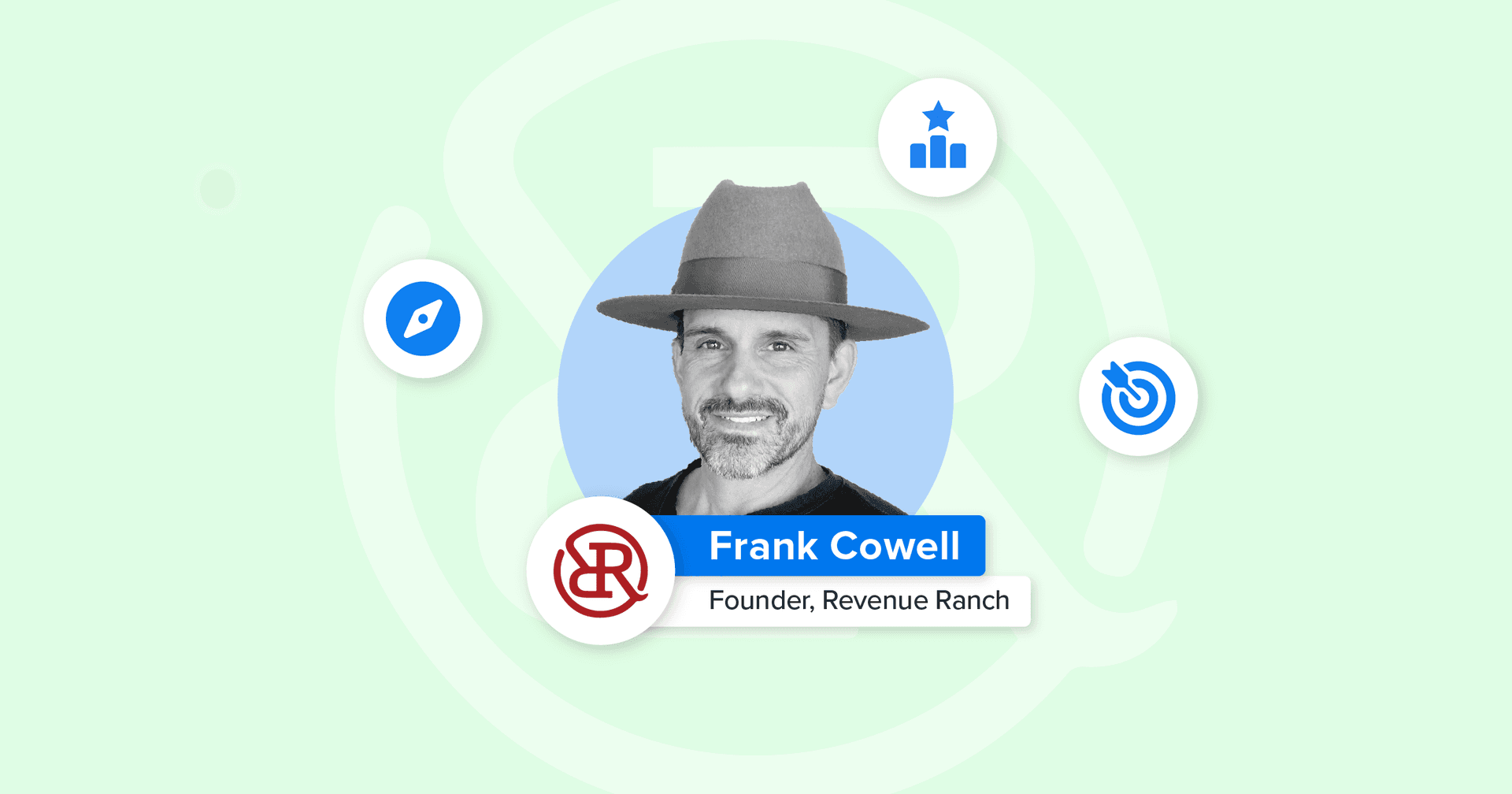Table of Contents
QUICK SUMMARY:
Examine the concept of Exceptional Execution with insights from Revenue Ranch founder Frank Cowell. Discover how mastering this strategy will propel your marketing agency toward growth and success. Learn the critical role of aligning daily operations with your vision to achieve strategic goals and foster a culture of accountability.
In our exploration of Frank Cowell’s Seven Capabilities Framework for marketing agencies, we’ve emphasized the importance of the True North Strategy—a clear and compelling direction for long-term success.
Today, we shift our focus to its essential counterpart: Exceptional Execution.
Exceptional Execution serves as the yin to True North's yang. While the True North Strategy outlines where your agency needs to go, Exceptional Execution details how to get there, ensuring that every step is aligned with your strategic goals.
Exceptional Execution happens once you have your True North established. What is your mode of execution across the entire company to move your company towards the True North in a systematic way?
Frank Cowell, Founder, Revenue Ranch
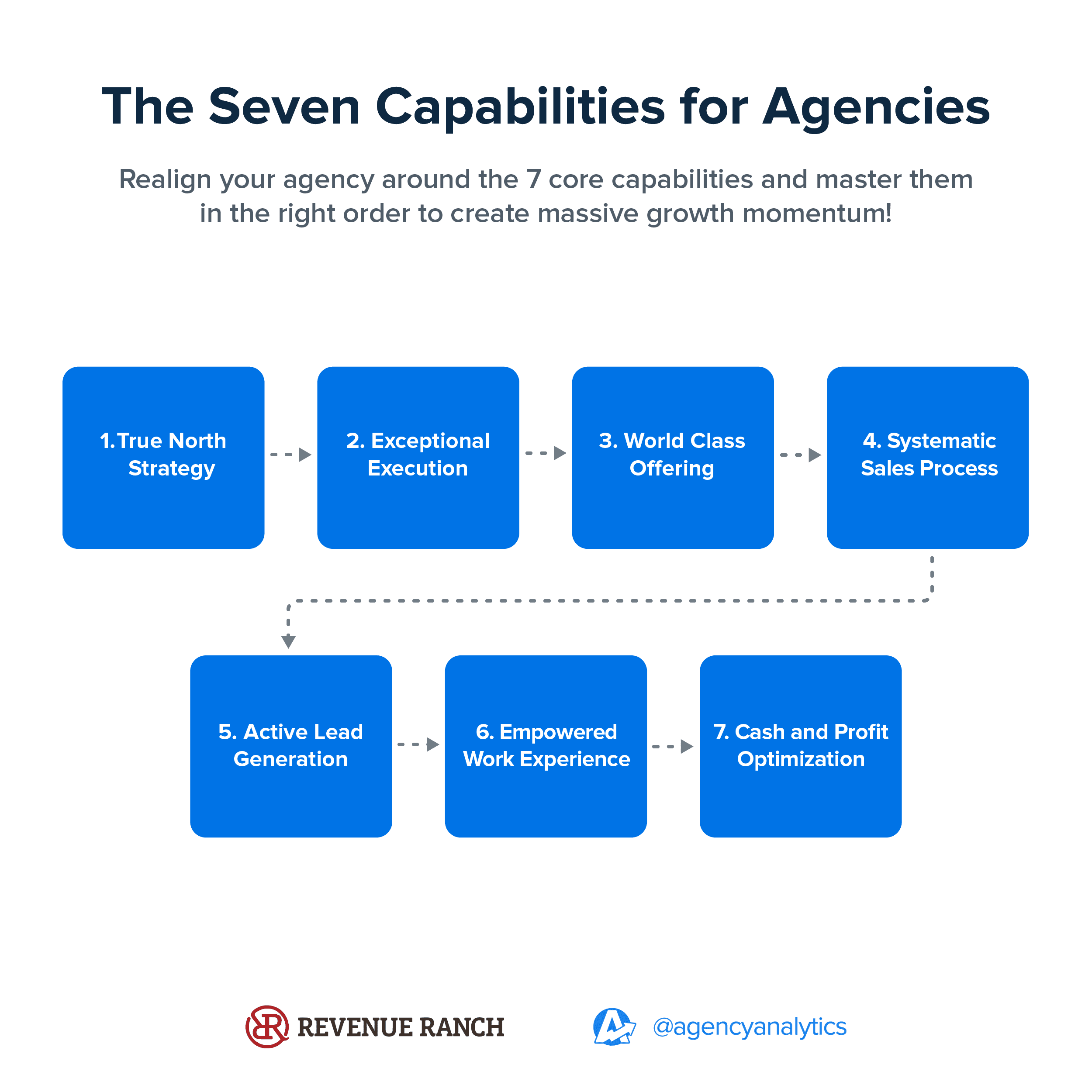
As we’ll explore in this article, Frank explains that a combined focus on strategic direction and operational execution is critical for agency growth. Without Exceptional Execution, your strategy won’t go very far.
Together, these concepts ensure your agency sets ambitious goals and works towards effectively achieving them.
Let’s examine Exceptional Execution and why it’s indispensable for making your agency's vision a reality.
What Is Exceptional Execution?
In the context of a marketing agency, Exceptional Execution extends far beyond delivering services to clients. It's about systematically implementing strategies across every agency department to ensure the entire organization is aligned and moving towards its strategic objective: the True North.
If we set our True North properly, we rarely need to change it. It becomes a long-term directional thing. So, that means that our mode of execution towards True North needs to have certain qualities. It has to be lean, consistent, periodic, and unified to get everyone involved.
Frank Cowell, Founder, Revenue Ranch
Exceptional Execution should span the whole agency and drive systemic change and continuous improvement. It's not just about executing tasks; it's about executing a vision.
Exceptional Execution involves strategic planning, disciplined processes, and consistent efforts across all levels of the organization. It ensures that every team member—from top executives to frontline employees—understands their role in the agency's journey towards its goals and is equipped to perform that role effectively.
The Six Pillars of Exceptional Execution
As outlined in Frank Cowell’s Growth Momentum Method, Exceptional Execution is structured around six key components, each essential for driving the agency toward its strategic goals.
The six pillars of Exceptional Execution create a robust framework that supports an agency in achieving its strategic goals in the True North Strategy and builds a culture of accountability and continuous improvement.
1. Momentum Analysis
Exceptional Execution begins with a momentum analysis conducted at the beginning of every quarter. The team comes together to perform a thorough evaluation of the agency's current position relative to its strategic objectives.
A momentum analysis serves multiple vital functions. First, it identifies the agency's progress toward its True North, highlighting successes and areas of strength. More importantly, it pinpoints blockers to growth.
That being said, conducting a momentum analysis isn’t about fixing all the blockers at once. It’s about tackling the right things in the right order to keep propelling the company forward.
That approach is what creates the most momentum in a company. We're looking for the top momentum blockers we should focus on right now.
Frank Cowell, Founder, Revenue Ranch
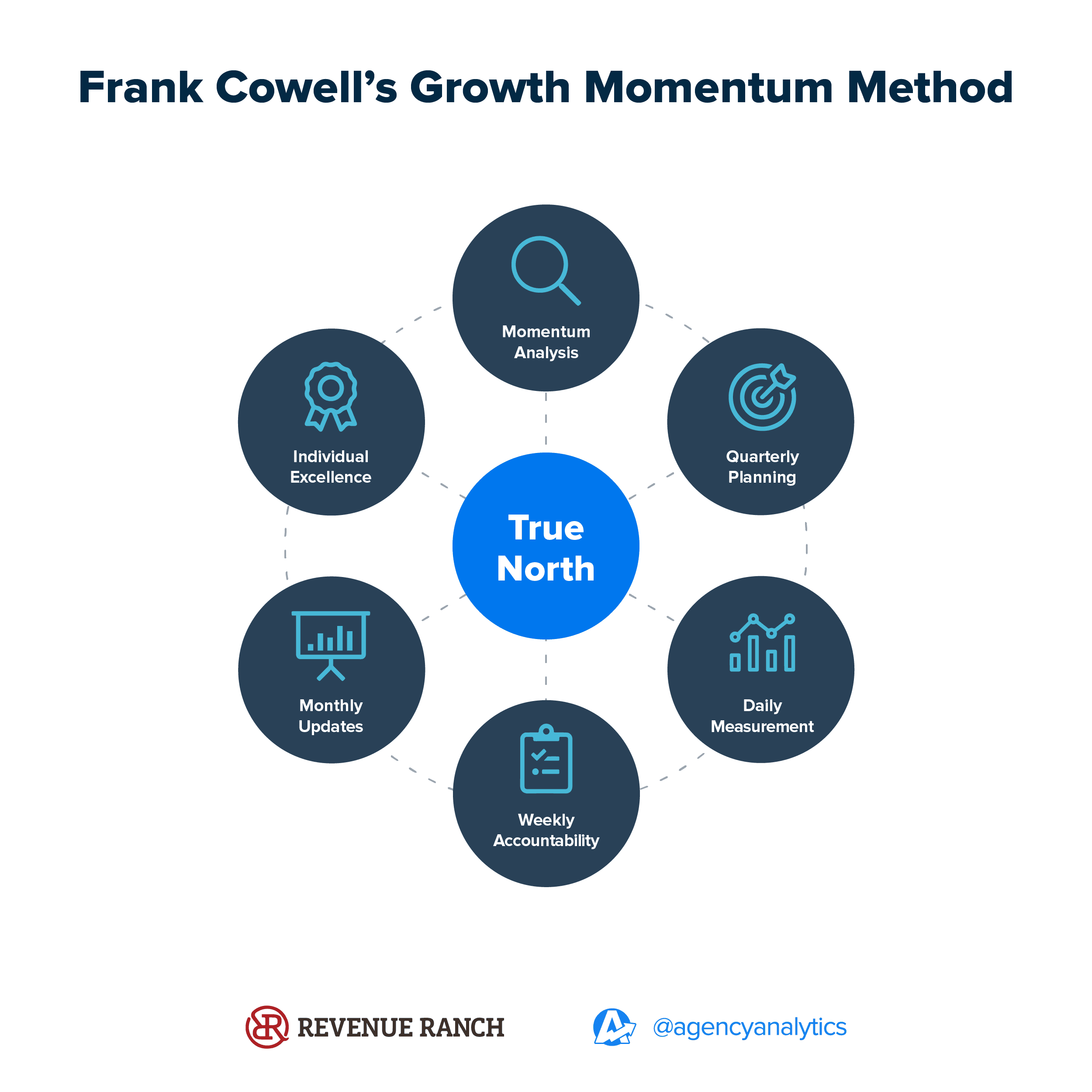
2. Quarterly Planning
The next step is quarterly planning, which involves setting specific, actionable objectives for the coming quarter that address any identified blockers to growth. This step ensures that the agency plans to overcome obstacles and sets targets directly tied to enhancing performance across all capabilities.
Once we’ve done the momentum analysis, we engage in a quarterly planning process. We develop a plan to tackle the blockers to growth. We'll also set targets for each area’s KPIs and every individual's KPIs.
Frank Cowell, Founder, Revenue Ranch
Example
Let’s take Creative Solutions, a hypothetical digital advertising agency for small businesses, as an example. Their momentum analysis identified client retention rates below industry standards, impacting growth toward their True North objective: "To become the leading digital marketing partner for small businesses in the region by delivering innovative solutions that drive measurable growth and customer satisfaction.”
In their quarterly planning, they set clear goals to address this: Implement a client feedback system, enhance training for account managers, and introduce a client loyalty program. They establish specific KPIs to measure success: Increase retention by 10%, achieve 90% positive feedback, and enroll 50% of current clients in the loyalty program.
These steps are designed to improve client satisfaction and directly contribute to the agency's growth objectives.
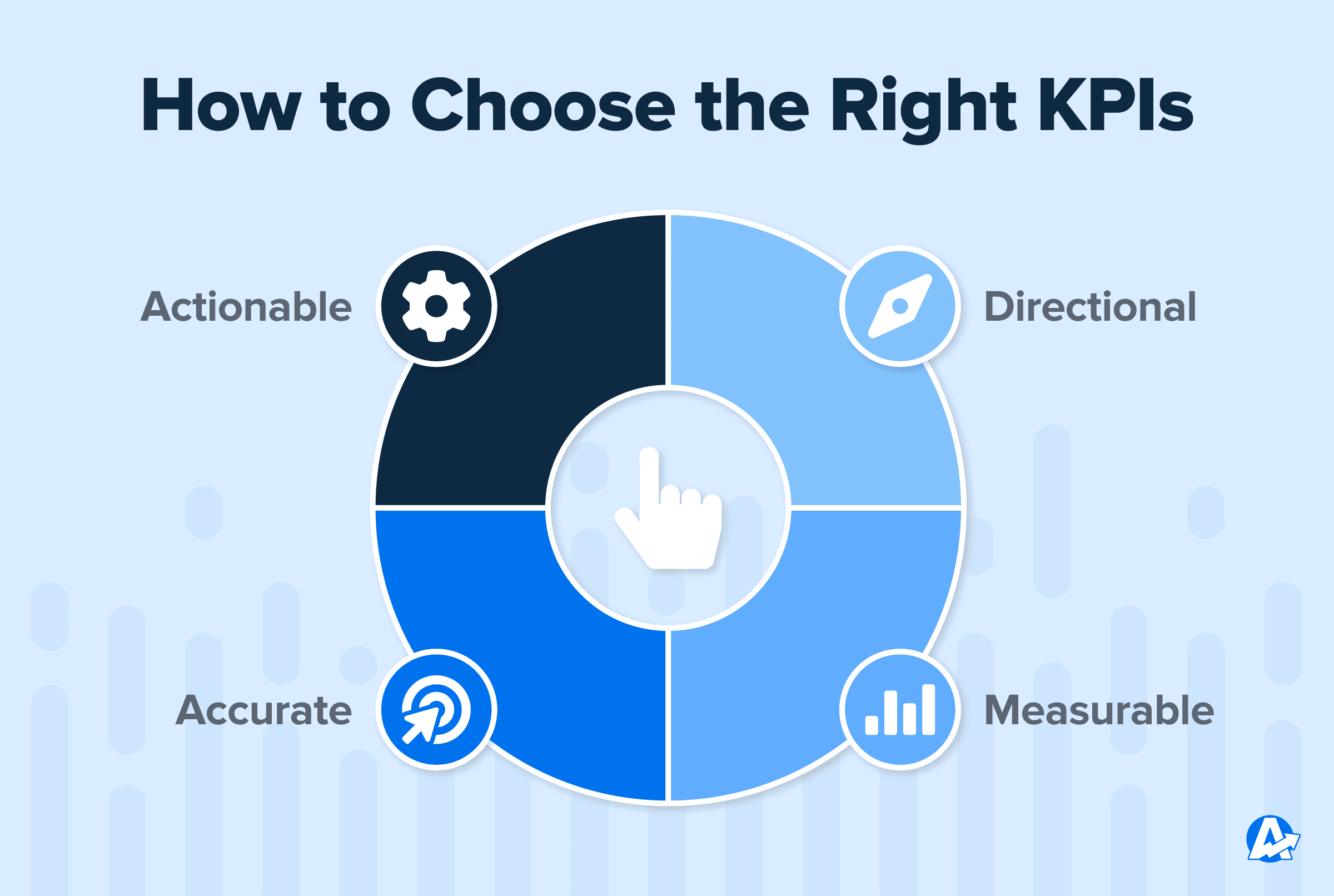
3. Daily Measurement
To keep the agency on track, daily measurement of KPIs is critical. This involves regular updates on individual and team progress towards the quarterly goals.
Effective daily measurement keeps everyone accountable and quickly highlights areas needing attention, preventing minor setbacks from becoming major roadblocks.
Once you have a plan, you engage in daily measurement. This means that everyone on the team measures what's relative to their role. Is there any progress on a given KPI?
Frank Cowell, Founder, Revenue Ranch
Example
Each morning at Creative Solutions, account managers report on client interactions, measuring feedback scores and enrollment rates in the new loyalty program.
These quick daily updates—often conducted in rapid-fire meetings or via team messaging apps like Slack or email—help the team identify if a particular approach isn't resonating with clients or if certain account managers struggle more than others.
By addressing these issues promptly, the agency prevents minor problems, like a single client's dissatisfaction, from escalating into larger issues that could affect overall retention goals.
4. Weekly Accountability
Weekly accountability sessions serve as a check-in for teams to report progress. They facilitate open communication about what’s working and what isn’t, enabling a culture of transparency and continuous improvement.
Frank emphasizes the importance of these sessions for cultivating a sense of personal responsibility and shared accountability within the team.
It's really important that weekly accountability becomes a cultural habit within the company. Another important aspect is that we're not talking about the kind of accountability where a manager leads the meeting and is holding their subordinates' feet to the fire.
Frank Cowell, Founder, Revenue Ranch
Example
What that means for Creative Solutions is that each individual team examines their weekly progress during these sessions. They focus on the newly implemented client feedback system, training enhancements, and loyalty program enrollments. They discuss what's working well and where they are facing challenges.
An account manager might report a successful strategy that led to a high enrollment rate in the loyalty program, which could then be shared and implemented by other team members. On the other hand, issues such as a drop in feedback scores prompt brainstorming to find solutions.
These sessions keep everyone informed and focused on the agency’s goals. They also foster a culture of transparency and mutual support that drives continuous improvement.
5. Monthly Updates
Monthly updates gather the entire company to review progress toward strategic goals. It’s also an opportunity to celebrate successes and recognize individual contributions, essential for fostering a motivated and engaged workforce. These meetings reinforce the agency’s commitment to its goals and maintain alignment across the organization.
This is where the entire company gets together, and the leadership team—the executive team and any other managers—has an opportunity to update the company on the plan's progress. It's also a time to celebrate and recognize people doing an amazing job—what wins we've had, work anniversaries, etc., and an opportunity for the team to learn something new.
Frank Cowell, Founder, Revenue Ranch
Example
For Creative Solutions, monthly updates are key events that gather the entire company to review progress toward True North. During these gatherings, the leadership team presents a comprehensive overview of the agency's performance, highlighting successes and areas that need more attention.
For instance, if the client retention rate has improved by 12%—surpassing the 10% target—this achievement is celebrated, and the teams responsible are recognized. Success stories, like an account manager's effective client interaction strategy, are shared to inspire and educate the whole company.
Meanwhile, if the feedback system indicates recurring client concerns, this forum becomes a platform for discussing potential strategies to address these issues.
6. Individual Excellence
The final pillar is about clearly defining roles and expectations to empower individual excellence. Regular one-on-one meetings ensure each team member receives the support and guidance needed to succeed in their roles and contribute to the agency's growth.
What this does for individuals is remove all ambiguity and create extreme clarity about why their role exists, how they're going to win, and even the level of their repeating weekly activities.
Frank Cowell, Founder, Revenue Ranch
Example
At Creative Solutions, managers provide feedback on strengths and areas for improvement during one-on-one meetings. For instance, if an account manager struggles with client engagement, the discussion focuses on specific, actionable steps to enhance performance.
This ensures every employee understands their role and receives guidance on addressing performance issues—whether that means a need for new tools or additional coaching and training.
These meetings directly address positive achievements and performance gaps, ensuring each team member has the support and clarity needed to excel and contribute effectively to the agency's growth.
Defining the Roles That Build a Culture of Exceptional Execution
Creating a culture of Exceptional Execution within a marketing agency involves clear roles and active participation from every level of the organization.
Here’s how each group contributes:
The CEO Sets the Vision and Leads by Example
As our True North Strategy article explained, the agency’s CEO or founder defines and communicates the agency’s overarching vision. Their role is to continually emphasize the importance of execution in meeting the agency's goals and model this commitment in their actions.
The leader should share success stories and recognize individual and team contributions to motivate staff and reinforce the execution culture.
The COO/General Manager Works With Other Leaders to Develop the Plan
The person who typically heads up Exceptional Execution is often the Chief Operating Officer (COO) or a general manager. This leader is responsible for the day-to-day orchestration of execution efforts across the agency. They ensure that strategic goals are translated into actionable plans and oversee their implementation.
Frank explains that the COO/general manager is, by default, a generalist. They manage the heads of all other capabilities—client services, marketing, sales, and administration. This person needs to be a good business planner and a good manager.
They definitely need leadership skills, including excellent communication. They have to be excellent generalist problem-solvers, which is why we often use the phrase ‘general manager.’ They should have an above-average understanding of finance. That way, they can get the P&L (profit-and-loss statement) and dig in instead of relying on the finance person to bring all the insights. They should understand the levers that drive retention and profitability.
Frank Cowell, Founder, Revenue Ranch
Middle Management Implements the Plan
Middle managers bridge the agency's strategic objectives and the tactical activities performed by teams. They break the strategy into executable tasks and monitor progress. Managers provide feedback and guidance, helping their teams adjust and improve their execution.
Team Members Deliver on Commitments
At the operational level, individual team members are responsible for executing tasks aligning with the agency’s broader goals. They must understand how their daily work contributes to these goals and take ownership of their results.
Regular participation in performance reviews and openness to constructive feedback is essential for maintaining accountability and fostering personal growth.
Support Structures Facilitate Effective Execution
The agency should have systems to support these roles. Support structures help maintain goal clarity, facilitate feedback, and recognize achievements.
Performance Management Tools: Software or systems that track and analyze employee performance against the agency's goals. They provide a clear and measurable way to assess how well individuals and teams meet their objectives.
Regular Communication Forums: These may be meetings, digital platforms, or both, where team members discuss progress, challenges, and strategies. These forums ensure continuous communication between the different levels of the organization.
By outlining these roles and ensuring active engagement from the top down, an agency will foster a robust culture of Exceptional Execution, drive toward its strategic goals, and cultivate an environment where excellence is everyone’s priority.
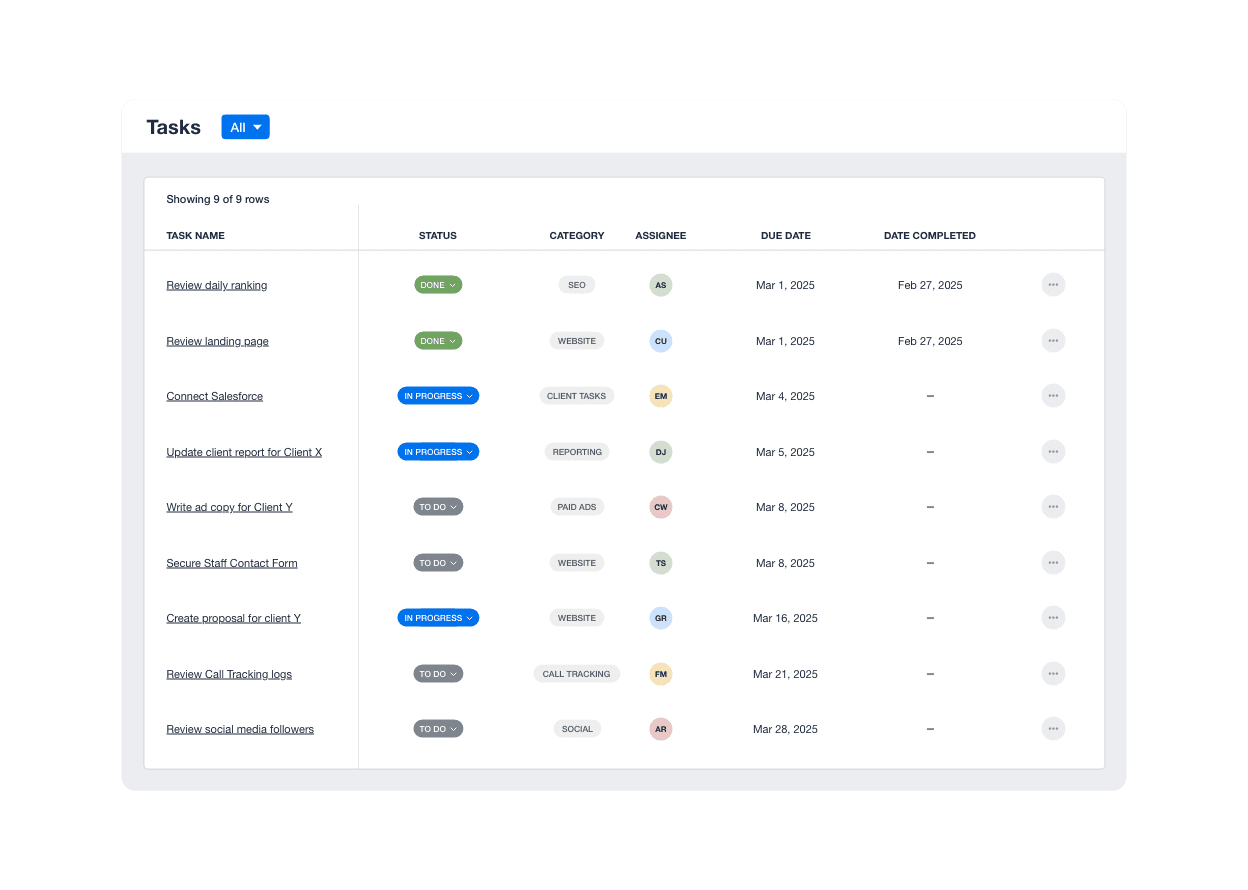
Track the progress of agency team members by assigning tasks in AgencyAnalytics. Watch as each element of your exceptional execution unfolds. Try it free for 14 days!
Does Your Agency’s Execution Match Its Unique Vision?
True North Strategy and Exceptional Execution work hand-in-hand.
While True North sets the direction for your agency’s long-term goals, Exceptional Execution is about taking the right steps every single day to meet those goals.
Remember that Exceptional Execution isn't just about doing tasks; it’s about everyone at your agency—from the top down—working systematically toward the same objectives. Leaders set the vision, managers turn it into daily actions, and team members carry out those actions with a clear sense of purpose.
Think about how your agency operates:
How is your agency gauging momentum?
Are your daily, weekly, and monthly practices helping you advance toward True North?
Do all team members understand how their work contributes to the agency’s goals?
Building a strong culture of Exceptional Execution will tighten your strategies and ensure that your agency is equipped to set ambitious goals and actively achieve them.

Written by
Francois Marchand brings more than 20 years of experience in marketing, journalism, and content production. His goal is to equip agency leaders with innovative strategies and actionable advice to succeed in digital marketing, SaaS, and ecommerce.
Read more posts by Francois MarchandSee how 7,000+ marketing agencies help clients win
Free 14-day trial. No credit card required.



